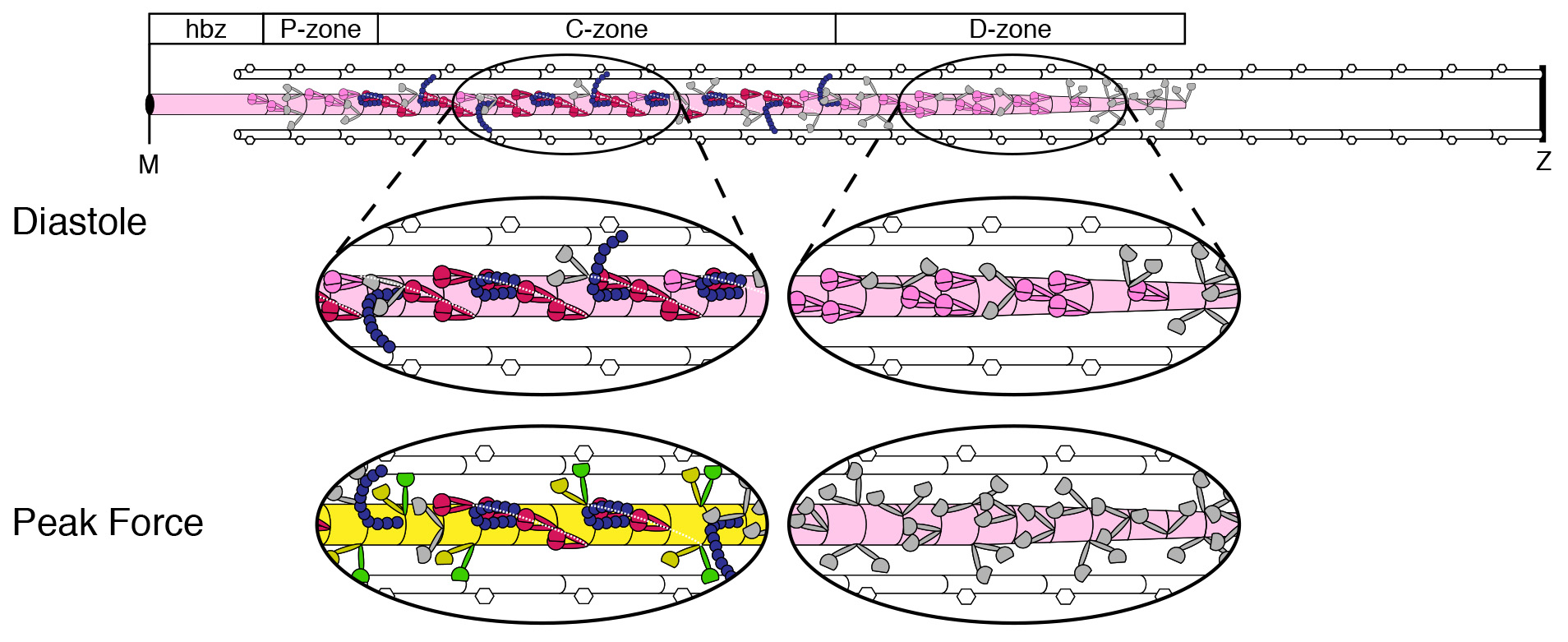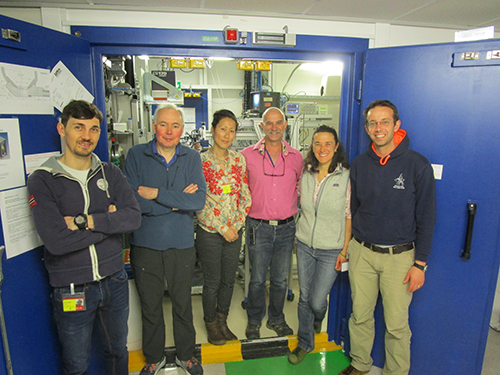- Home
- News
- General News
- Understanding the...
Understanding the heartbeat: the myosin filament plays a key role
30-03-2020
Researchers from King’s College London and the ESRF have discovered that structural changes in myosin filament are crucial for the correct functioning of the heart.
The heart is the most important muscle of our body. It beats about three billion times during the normal lifespan, adjusting strength and duration of every single heartbeat to meet the oxygen demand of our body. At the cellular level, contraction of muscles is driven by the relative sliding of two sets of filaments: the thick filaments, mainly composed of the motor protein myosin, and the thin filaments, containing the track protein actin. However, the regulatory mechanisms that control strength and duration of the heartbeat are not well understood.
For many decades, scientists thought that contraction of the heart was solely controlled by structural changes in the actin filament, triggered by an increase in calcium concentration in the muscle cell. However, an international team led by scientists at King's College London have found that structural changes in different domains of the myosin filament are key to the optimal beating of the heart.
 |
|
Structural dynamics of myosin motors and filaments during contraction of cardiac muscle. Credits: E. Brunello. |
The team went to the ESRF’s ID02 beamline, where they monitored the changes in the structure of the myosin filament during the heartbeat using Small Angle X-ray diffraction. They recorded small-angle fiber diffraction data from electrically-stimulated heart muscle cells at a time resolution of 20 milliseconds. “The ESRF played a fundamental role in our research, as beamline ID02 is one of the very few in the world where we can carry out such tricky measurements”, explains Elisabetta Brunello, corresponding author of the paper and researcher at King’s College London. Theyencheri Narayanan, scientist in charge of ID02, adds: “This is a long-standing collaboration which keeps on bearing fruit, and we are really pleased that ID02 can help research on heart muscle regulation to move forward”.
They discovered that the speed of the regulatory structural changes in the myosin filament controls the strength and speed of the contraction and relaxation of the heart. Their results provided them with a picture of the different steps taking place during the heartbeat. In the relaxed phase of the cardiac cycle, most of the myosin motors are inactivated by folding onto the surface of the myosin filament. At the beginning of the contraction, the motors at the tips of the filament are activated first and trigger an activation wave that travels towards the central regions of the filament. At the peak of contraction, only a few motors in a region of the filament with a distinct protein composition generate force. The speed of inactivation of these motors control the rate of relaxation of the heart.
 |
|
The team in front of ID02's experimental hutch. From left to right: Andrea Ghisleni, Malcolm Irving, So-Jin Park-Holohan, Jacques Gorini, Elisabetta Brunello, Luca Fusi. Missing in the picture: Theyencheri Narayanan. |
“This myosin-based regulation is essential for the normal function of the heart, because when it is compromised, as in heart failure for example, the heart doesn’t have enough strength to pump blood around the body”, explains Brunello.
Cardiovascular disease continues to be the leading cause of death worldwide, and is frequently associated with heart failure. Efforts to develop better therapeutics for heart failure have been held back by limited understanding of the normal control of contraction on the timescale of the heartbeat. Now that the team has shown the key role of myosin filament-based control mechanisms, these mechanisms could be a target in the development of new therapies for heart disease.
“We will continue to try to better understand the thick-filament regulation of cardiac contractility so that we can better understand disease mechanisms, and ultimately we can better design potential therapies and trials for such therapies”, she concludes.
Reference:
Brunello, E. et al, PNAS, 23 March 2020. https://doi.org/10.1073/pnas.1920632117



